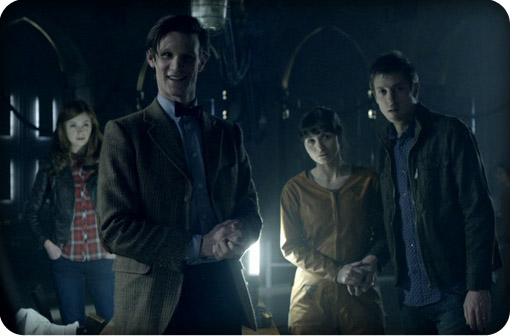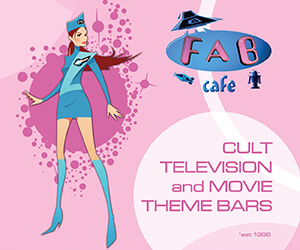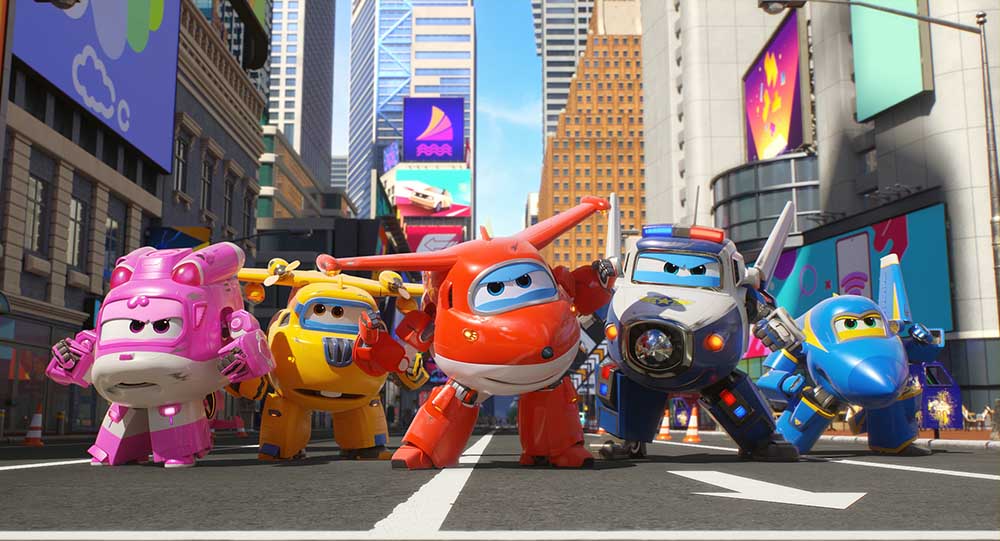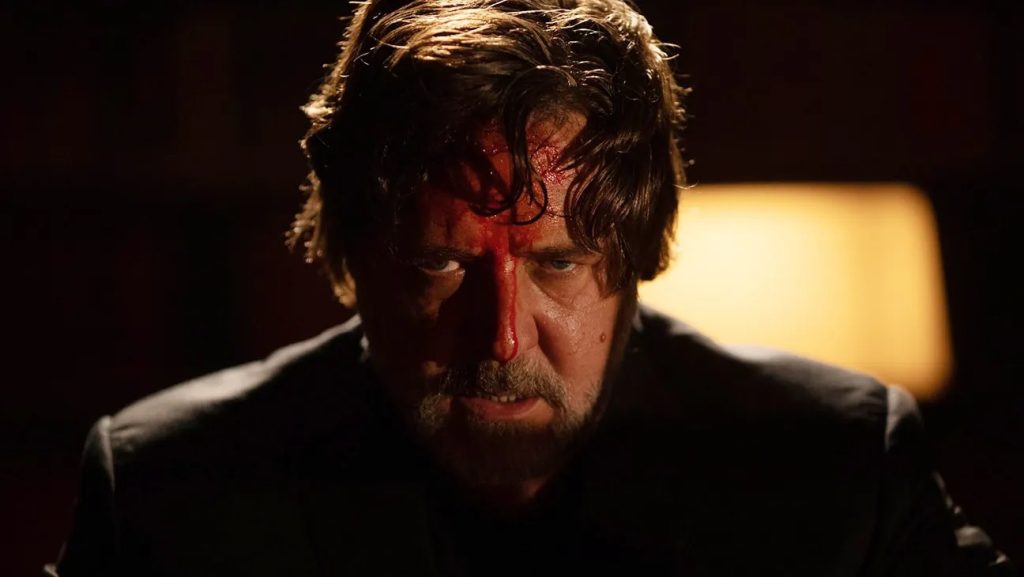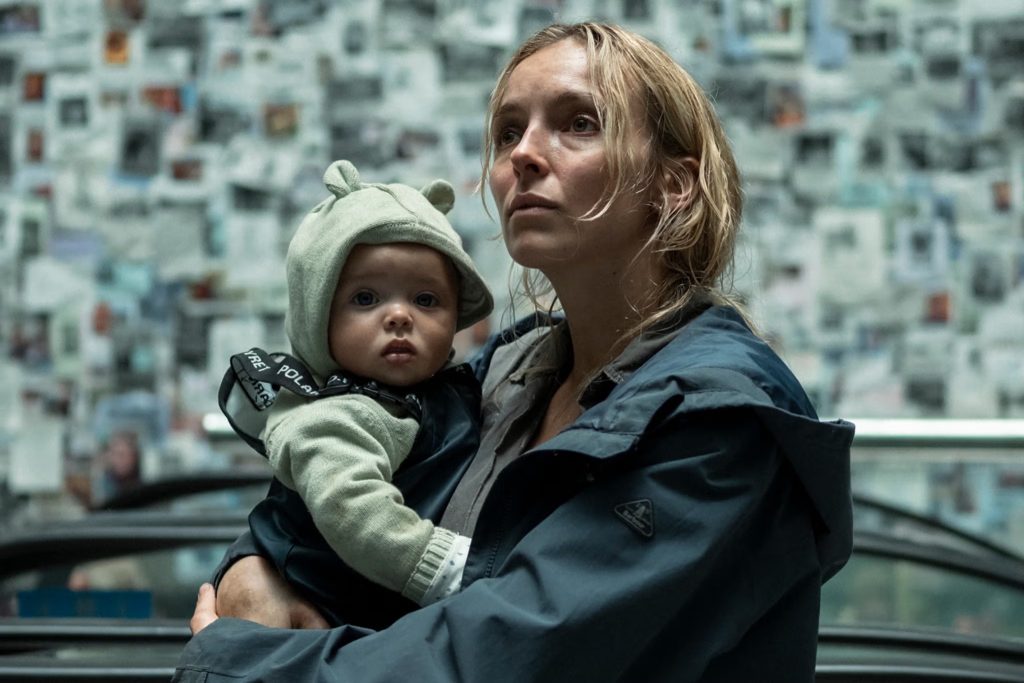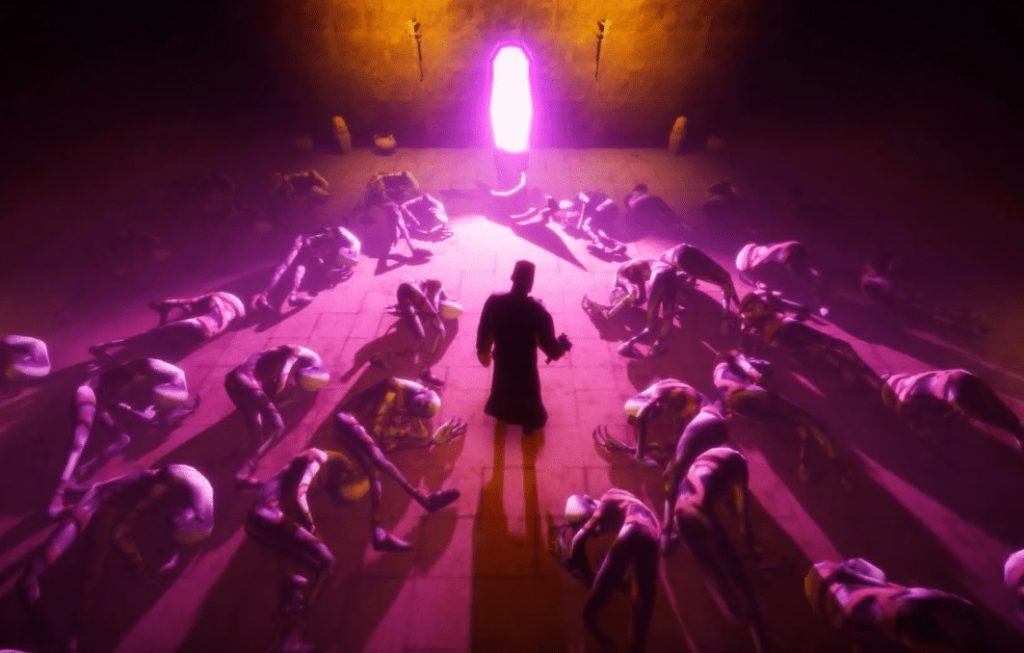
The Rebel Flesh / The Almost People
How much you enjoy Matthew Graham’s two-part Doctor Who story will probably depend upon how much of a traditionalist you are (certainly any bad memories of his second series episode Fear Her will now have been banished). Coming on like a version of Horror of Fang Rock as directed by James Cameron, Graham’s Gangers story is as dark and as cinematic as modern Doctor Who can probably manage. It’s not without its problems, though.
The location – actually two locations: Caerphilly Castle and Cardiff Castle – is beautifully shot and gives the story an authentic and claustrophobic feel: like the lighthouse on Fang Rock, the setting is so isolated the characters have nowhere to escape to once things gang agley. While Fang Rock was a vertically-inclined story (which would have been more in Russell T Davies’ line), there’s plenty of room in this location for characters to get lost in the maze of tunnels (indeed Rory seems to spend about an episode’s length chasing around after Jennifer, and thus separated from the other TARDIS travellers – although thankfully, for once he doesn’t die), or up to dark deeds in hidden corners. There are some great special effects, particularly of the solar tsunami (do what?) and the awakening Milk Men, and Murray Gold’s music is as excellent as always (the man’s a legend, and there are some evocatively b-movie-esque riffs here) – but the trouble is the idea, or the script. Matthew Graham gives himself an impossible task from the off.
In the pre-titles sequence, we’re introduced to a small crew of ostensibly human characters (and there’s a terrifically gooey cliffhanger that will have had the kids squealing with delight, as clumsy as the sequence leading up to it might have been), but it’s not long before we discover they’re actually “the Flesh”, doppelgangers created from living templates in a kind of enormous milk bath. The problem Graham sets himself is this: the humans can only control their “Ganger” counterparts while they’re unconscious, and so the people we’re thus forced to spend the first part of the episode with are all fakes. This would have been all very well, had Graham given the characters strong enough personalities that we might have taken to them immediately, or better yet, had the Gangers remain unaware of their Ganger status until the second tsunami strikes. But the fake-humans are only too aware of what they are, and there’s too little to differentiate between them for us to care. When the real humans wake up, you have to start taking notes to work out who’s who. When we arrive at the story’s tipping-point then, and the Gangers are given their freedom to rebel against their controllers and creators, it’s a lot less involving than it might be. The Jimmy (Mark Bonnar) sub-plot – the usual cliché in such stories, concerning the family left behind – is almost at odds with the rest of the story, a token gesture towards humanising the ensemble that fails to elicit the required response. It’s like Matthew Graham (perhaps fearing for his reputation after all the “love” stuff in his previous Doctor Who) has rewritten Avatar – one of the two greatest influences on his script – and sucked all the sentimentality out of it, leaving something with little personality or potential for empathy in its stead.
The other massive influence is The Thing, particularly the John Carpenter version. Once the Gangers and humans have gone their separate ways, the plot becomes a game of hunt-the-imposter, with – once again – all the usual clichés that entails. It would hardly have been a surprise had the rescue shuttle turned up at the end of the second episode, only to have been manned by the exact same cast again as we had already twice seen, the revelation being that the “originals” were Gangers themselves. Fortunately budget seems to have vetoed that idea, the rescue ship remaining firmly off-screen, giving a slightly unsatisfactory air to the resolve – although the “let’s all hop in the TARDIS and run away” climax at least gives us the scene where the blue box falls out of the ceiling; it’s the bookend to the “TARDIS parking” opening of Fear Her and a moment of minor brilliance, one of many that litter Graham’s scripts – in Doctor Who or elsewhere – no matter how stale or workmanlike they can otherwise sometimes be. The effects of Jennifer contorting and stretching her body, before eventually rendering herself monstrous completely, are very much out of the cinema of Carpenter and Cameron. And also very much out of Doctor Who’s own Series Three story The Lazarus Experiment, just one of a number of previous, and fairly recent, stories from which Graham seems to be taking a cue.
Another cue comes from Journey’s End, of course, in which David Tennant ends up meeting himself, a second Doctor having unwittingly been created by the regeneration-that-didn’t-happen. In The Rebel Flesh, there’s nothing unwitting about the eleventh Doctor’s continual “prodding” of the Flesh – once he’s realised that it has started scanning him, he almost dares it into making the copy – and his excuse about needing to see how differently the humans, particularly Amy, treat the Gangers is almost an admittance of, “We thought it would be great fun to have two Matt Smiths interacting,” and so it is. The cliffhanger to the first episode, then, is about as signposted as cliffhangers come, but that doesn’t lessen the impact of seeing the Ganger Matt Smith addressing the camera (as much as he’s addressing anyone on screen, that is) and announcing, “Trust me, I’m the Doctor.” And there’s plenty of two Doctors action in the second half of the story, a welcome thread of light relief in an otherwise pretty gloomy ninety minutes (another is the gloopy Ganger disintegration effect, resembling nothing so much as the exploding Slitheen from the Sarah Jane Adventures, and rendering the climax of The Almost People slightly silly as a result).
Talking about gloopy Ganger disintegration effects, it’s strange that the Ganger Doctor was killed off at the end, given that it seemed the odds-on solution to the mystery of the Doctor’s death back in Episode One. Although given Moffat’s propensity for timey-wimey solutions, I suppose nothing is impossible, and doubtless we’ll also have a convoluted and nonsensical (but nevertheless fun) explanation for how a Ganger of Amy came to be travelling in the TARDIS several stories earlier than the TARDIS crew first encountered the Gangers – and no doubt Moffat will use this as an excuse to give us a story with two Amys in it as well, to match the episode we’ve just had with two Doctors.
One of the reasons Steven Moffat gave for this year’s series only having a single-episode finale, was that with the year split into two “mini-series”, every episode counts double and to have a two-parter at the end would effectively mean “losing” a story elsewhere. Which seems rather an odd thing to say, given that the first, slightly longer, half of the series contains two two-parters (and a half), and therefore only five (or four and a half) stories in total. This particular two-parter really needed to count, then. You can see why it was an important inclusion, with the Ganger ripples presumably about to trickle down to the rest of this year’s series, and you can see how a hybrid of Avatar and The Thing would have been a popular and topical choice of story (insofar as this series of Doctor Who seems preoccupied with aping modern Hollywood fantasies).
But as entertaining and as bold and as downright odd, occasionally – in that special Doctor Who way – as Graham’s story undoubtedly is, it also feels a touch spartan and uninvolving … almost as if we’re being presented with the Ganger version of a slightly better Doctor Who.
Or a very eighties version, perhaps. This story is very much in the vein of classic stories where the plot is more important than the characters. In that respect, it really works. It’s nonsense, but it’s entertaining and it’s hugely enjoyable.
How much you enjoy the cliffhanger at the end of the second episode, however, will probably depend upon what your threshold for disturbing images is. The sight of Amy, locked in a box and suffering contractions, and being told to “Push!” by Frances Barber in her eye-patch and in a criminally hammy manner, is certainly one of the most disturbing and adult images ever broadcast in the name of Doctor Who (although the sight of the other Amy dissolving in the TARDIS was wickedly funny), and as surreal and as otherworldly as its presentation might have been, it must still have sent a lot of children to bed with nightmares bubbling up in their heads. Which might not necessarily be a good thing, in this instance. Let’s just hope there weren’t any children watching!


